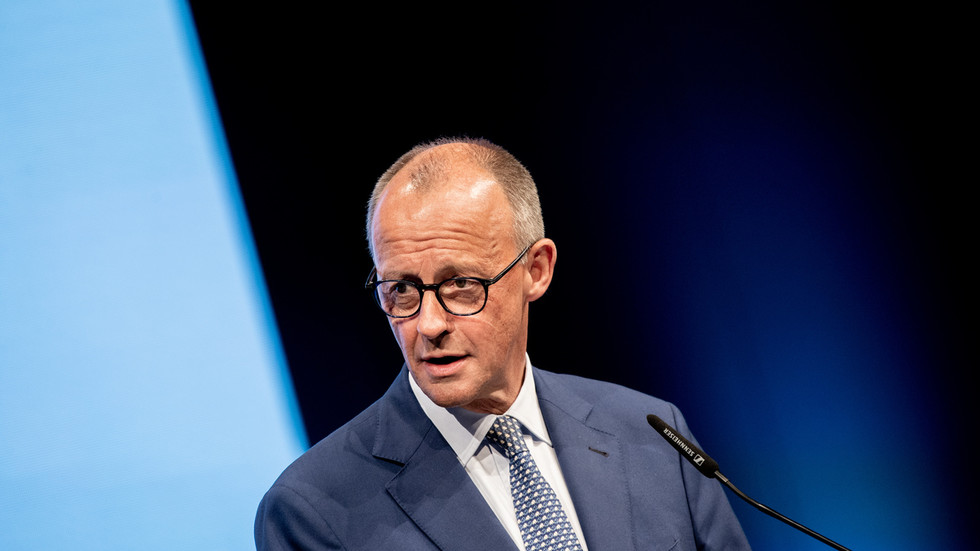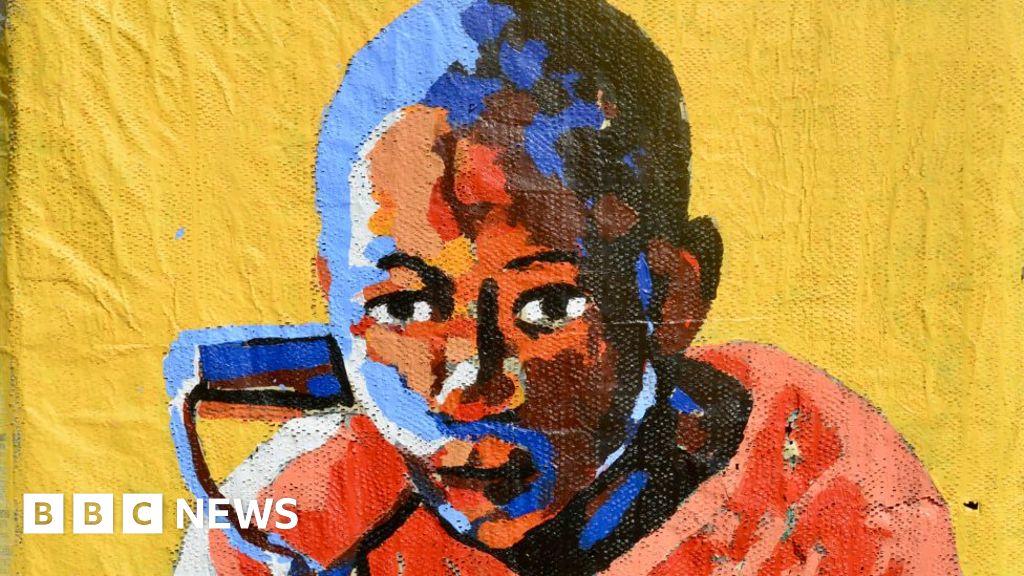
In the visitor center in the town of Civitella Alfedena inside Italy's National Park of Abruzzo, Lazio, and Molise, you can see wolves rescued inside the park. Paolo Picciotto/REDA/Universal Images Group via Getty Images hide caption
toggle caption
Paolo Picciotto/REDA/Universal Images Group via Getty Images

In the visitor center in the town of Civitella Alfedena inside Italy's National Park of Abruzzo, Lazio, and Molise, you can see wolves rescued inside the park.
Paolo Picciotto/REDA/Universal Images Group via Getty Images
PESCASEROLLI, Italy — On Sept. 1, 2022, under an almost-full moon, a male wolf slipped into a paddock in the hamlet of Burgdorf-Beinhorn in Germany. He was following the scent of Dolly, a sweet chestnut mare with a white stripe on her muzzle. At 30 years old, Dolly was vulnerable. She became his next meal.
Some 700 miles away, in Pescasseroli, a little town inside one of Italy's national parks, there lived a pet dog named Walco. The 10-year-old Czechoslovakian Wolfdog liked to exchange howls from his fenced-in garden with the wild wolves nearby. Four months after Dolly's death, four wolves jumped the fence. Walco's howls fell silent forever.
Dolly was owned by Ursula von der Leyen, the German president of the European Commission. Walco belonged to Valeria Roselli, a guide with an Italian group called Wildlife Adventures. How these owners reacted to the killings of their much-loved animals — one campaigning to lower protections for wolves and the other insisting that humans must adapt for wolves — mirrors the battle that is now unfolding over the future of wolves in Europe.

Two horses in Pescasseroli, a town located in the heart of the Abruzzo region, within the Abruzzo, Lazio, and Molise National Park. Valerio Muscella for NPR hide caption
toggle caption
Valerio Muscella for NPR

Valeria Roselli leads a tour group on the slopes of a mountain in the Giovenco Valley. After her dog was killed by wolves, she insisted that humans and their pets must adapt. Valerio Muscella for NPR hide caption
toggle caption
Valerio Muscella for NPR
Wolves lose "strictly protected" status in Europe
The European Union has spent millions to help secure the return of wolf populations that for generations were persecuted through hunting and poison baits. As a result, wolves started to recover in Europe. But in May, the European Parliament voted to downgrade the protected status of wolves, in a decision that environmental groups warn will "undo decades of progress" and may see this keystone species threatened again. In a press release, the World Wide Fund for Nature, WWF, called the move a "baseless crusade."
The driving force behind this change was Von der Leyen and the European Commission she leads. Three days after Dolly's death, she said wolves in some parts of Europe had "become a real danger for livestock" and "potentially also for humans." Her words infuriated conservationists, who point out, according to the European Commission's own 2023 report, there has been no single fatal attack on humans by wolves in Europe in over 40 years.
Von der Leyen forged ahead, calling for an in-depth analysis into wolf attacks on livestock — and then pushing to reduce their protected status, which has been in place since 1979 under the Bern Convention.
Von der Leyen is from the conservative Europe People's Party, which has sought to win the support of farmers. But her fervor surprised EU diplomats in Brussels, who told Politico she was personally following up on technical discussions that would usually be left to scientific experts. They called her actions "bizarre." Environmental groups have accused the European Commission of deploying wolves as a "bargaining chip" to win support from livestock farmers for "political gain." They have claimed Von der Leyen is motivated "purely by personal reasons."
"There is no scientific justification for weakening their protection," said Gaia Angelini, the president of Green Impact, an environmental nonprofit based in Brussels and Rome. "Wolves are still threatened with extinction in some parts of Europe."
Von der Leyen's office declined NPR's request for an interview. It shared a March 6 press release that quotes the EU Commission president as saying this change to EU law will "help local authorities to actively manage wolf populations while protecting both biodiversity and our rural livelihoods."

Five female Apennine deer in the valleys of the Camosciara Reserve, near the village of Villetta Barrea in the Abruzzo national park. Valerio Muscella for NPR hide caption
toggle caption
Valerio Muscella for NPR
A heated fight over wolves' future
Wolves and other apex predators play a vital role in natural ecosystems. In the midst of a planetary crisis that is seeing widespread collapse in biodiversity, conservationists say wolves help keep the species they prey on healthy by hunting weak or sick animals, and they reduce the spread of illnesses like Lyme disease. They keep populations of deer, wild boar and other ungulates in check and on the move, meaning plants and tree shrubs that might otherwise be eaten have a chance to grow. Their presence has been celebrated by environmentalists as a sign of hope for nature's recovery.
But their return has also angered and frightened livestock farmers and others in rural communities who are having to learn to live alongside these once nearly-extinct creatures. Farmers who previously left their sheep to roam now need to invest in electric fences or trained sheepdogs to protect their flocks — or, in some areas, risk losing a percentage to wolves.
The number of domestic animals killed remains a tiny percentage. An EU report found that overall, wolves kill about 0.065% of the EU's 60 million or so livestock, mostly sheep, per year. A recent peer-reviewed study from Poland, where scientists analyzed wolf scat for two years, found that where there are enough wild animals for wolves to prey on, even in areas where cattle and horses roamed unprotected, wolves rarely attacked.
The EU provides funds to build protections for livestock and can compensate for lost livestock, though some farmers say the procedure is not always simple.
For smaller farming businesses, though, wolf predation can still have serious consequences. And the ire over the return of wolves runs deep. In Germany, a severed wolf head was placed outside a local conservation office. In Switzerland, farmers placed the carcasses of sheep killed by wolves in front of a regional government building. In Italy, on a mountain pass dotted with wildflowers, six black garbage bags were found with nine dead wolves inside. They included a pregnant female and seven cubs — a whole pack. They had been poisoned.

A Maremmano-Abruzzese sheepdog walks through the streets of Pescasseroli at night. It is an Italian breed of livestock guardian dog, indigenous to central Italy, especially Abruzzo. It has been used for centuries by Italian shepherds to guard sheep from wolves. Valerio Muscella for NPR hide caption
toggle caption
Valerio Muscella for NPR

Valeria Roselli, from Pescasseroli, has been a nature guide for Wildlife Adventures since 2012. Valerio Muscella for NPR hide caption
toggle caption
Valerio Muscella for NPR
Adapting to live alongside wolves
For Valeria Roselli, whose beloved dog Walco was killed by wolves in Pescasseroli, the decision to allow more wolves to be shot goes against everything she works for. As a wildlife guide in Italy's rural Abruzzo, she takes small groups on excursions to try to see wolves and other animals in their natural habitats. Her job is important, she tells NPR, because, she hopes, it can help people to better understand how to coexist with nature.
Rather than advocate for killing the wolves that attacked her dog, after Walco's death Roselli and her neighbors adapted. They brought their pets indoors when they went out. "We should do as wild animals often do and learn from our experiences, for the better," Roselli says, recounting Walco's death to a group including NPR during a trip to a museum dedicated to the Apennine wolf. "Not lower wolves' protections or resort to killing them."

Members of a Wildlife Adventures excursion observe with binoculars, attempting to spot wild animals in Italy's Giovenco Valley. Valerio Muscella for NPR hide caption
toggle caption
Valerio Muscella for NPR

Valeria Roselli shows a hiking trail on a map. Valerio Muscella for NPR hide caption
toggle caption
Valerio Muscella for NPR
As political parties from the far right have entered the political mainstream, both in national governments and in the European parliament in Brussels, the EU's ambitions for restoring nature are being rolled back. The vote to reduce the wolf's protected states was pushed through as an "urgent procedure" — usually reserved for emergencies. It meant the bill could bypass some of the usual protocols that would see it more closely scrutinized.
Green Impact and four other environmental and animal rights groups are challenging the decision to downgrade the wolf's protected status in the European Court of Justice. Over 700 scientists and academics, along with the International Union for Conservation of Nature, have signed letters opposing the change in protected status and arguing the EU decision lacks a scientific basis.
An investigation has now also been opened by the European Ombudsman to look into whether Von der Leyen's European Commission followed the right protocols as it pushed for this change that environmentalists say will have far-reaching consequences for Europe's wolf populations and for the EU's reputation as a leader in biodiversity protection.
Italy has worked to address fears of wolves
Throughout history, wolves have captured the human imagination. And since medieval times, wolves have been targeted and killed by humans. In the United States, it is estimated that 100,000 wolves were killed for their pelts each year between 1870 and 1877, according to the International Wolf Center.
In Europe, they were driven to near extinction.
"Not only was it legal, but it was an obligation to kill wolves by spreading poison baits," said Piero Genovesi, the head of the National Wildlife Service with ISPRA, the Italian environmental agency.
In the 1970s, as scientists' understanding grew of the important role apex predators play in nature, conservationists launched a campaign to revamp the wolf's image. In Italy, a deeply Roman Catholic country, they invoked the story of St. Francis of Assisi befriending wolves, to change locals' perceptions of the animal.
By 2022, ISPRA estimated Italy had more than 3,300 wolves, the biggest population in Europe.

The Apennine Wolf Museum in Civitella Alfedena features exhibitions on the biology, history and legends associated with wolves and their relationship with humans. Valerio Muscella for NPR hide caption
toggle caption
Valerio Muscella for NPR
Wolf tourism has helped revive economically deprived rural areas
Their comeback may help regenerate deprived economic regions like Italy's Abruzzo. The beautiful medieval borghi – hilltop towns – that dot this region are emptying as Italians move to the cities for work and Italy struggles with a low birth rate. Nature tourism to see wolves and bears is breathing some life back into these economies.

San Sebastiano dei Marsi is a hamlet with about 150 inhabitants, located in the upper Giovenco valley within the protected area of the Abruzzo, Lazio, and Molise National Park. Valerio Muscella for NPR hide caption
toggle caption
Valerio Muscella for NPR
Although wolves remain under some protections under the new law, experts believe that in practice, relaxing the rules will embolden vigilantes to freely kill even more animals than the law allows — a reality that Genovesi from ISPRA says would be "really dangerous" for wolf conservation in European countries.
Instead, Genovesi says, the EU could focus on helping to educate and better equip farmers to protect their livestock. In rural Abruzzo, where wolf populations always survived, their presence is largely accepted, even by many farmers. The knowledge of how to live alongside them has been passed down through generations. Sheep are never left alone, protected by shaggy white Abruzzese dogs or watched over by shepherds.
"The wolf is a wild animal just like the others here," said Luca De Rosa, a local farmer, as he flung fennel off his truck into a field for his cows. "One day he's on my side of the mountain; the next he's moved on. Why would we shoot them?"
After Dolly the pony was killed in Burgdorf-Beinhorn in 2022, local authorities used DNA samples from her carcass to identify her killer as a wolf known as GW950m. This animal was already wanted by others for preying on livestock in the area. He was stripped of his protected status and put on a kill list.

A horse on an estate in Pescasseroli. Valerio Muscella for NPR hide caption
toggle caption
Valerio Muscella for NPR
In the autumn of 2023, hunters shot a large wolf they thought was GW950m. But they soon learned they'd made a mistake. Instead, they had killed his mate, the mother of his cubs.
Later that year, a Hanover court banned the hunt for GW950m, after a petition was brought by the German group Friends of Wild Wolves.
Speaking with NPR in May, Ralf Hentschel, an activist with the group, said GW950m has found a new mate. They are still in Burgdorf-Beinhorn, living with their two young wolves that were born last year.

 1 month ago
20
1 month ago
20










 English (US) ·
English (US) ·